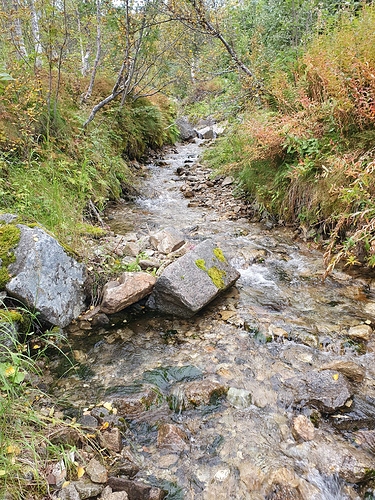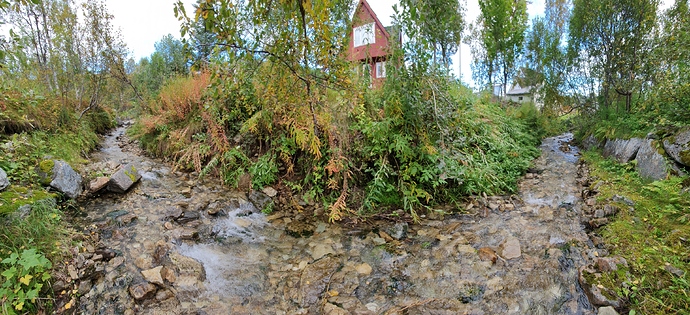Here is the creek:
This is a panorama, showing the length of the creek as it passes the house. Bear in mind that it’s running in a straigth line:
I think I can get 2-3 meters of fall if I use long and flexible pipes. My initial plan was building an aquaduct out of wood, but I’ve scrapped that. Laying flexible pipes on the bottom of the stream bed would hide the installation much better, and if I did it properly, I could even leave them there for the winter, and only rescue the turbine.

